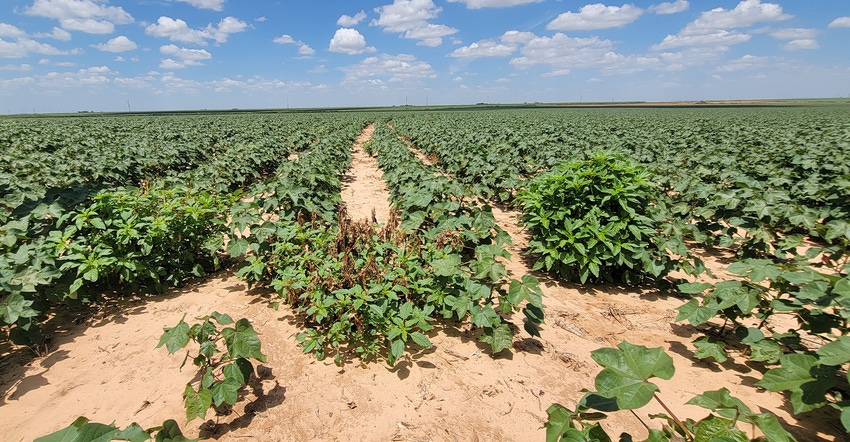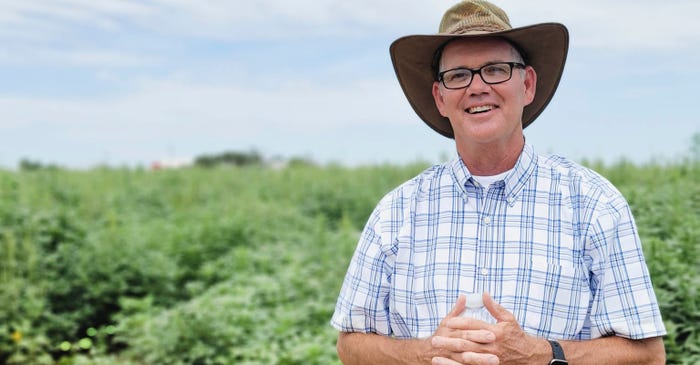
This fall, more so than in recent years, farmers should start early to determine what weed control products they will need for the 2022 season.
“Growers should anticipate some product shortages, and some higher costs,” says Texas A&M AgriLife Extension Weed Specialist Pete Dotray, Lubbock.
 Texas A&M AgriLife Extension Weed Specialist Pete Dotray, Lubbock (Photo by Shelley E. Huguley)
Texas A&M AgriLife Extension Weed Specialist Pete Dotray, Lubbock (Photo by Shelley E. Huguley)
“I think producers need to start planning to determine what weed control products they plan to use in 2022. The sooner they know what they can find and what they can’t, the sooner they can start making plans.”
See, Efficient fertilization is key in 2022
Dotray says potential product shortages could mean higher prices, in addition to availability issues.
“After several visits with colleagues who follow and monitor product inventory far better than I do, the consensus was that shortages will be likely, and glyphosate and glufosinate seemed to be the common theme of concern. Supply probably will not get any better and could get worse moving into the 2022 growing season. Other products may also be in short supply. Having to plan early is not in itself a bad thing.”
Dotray thinks cotton-specific, at-plant herbicides will be readily available, as they always have been. “We are not certain if prices will go up, but it sounds positive that these products will be available. With concerns with Liberty and Roundup, we may be more reliant on at-plant and other soil-active herbicides applied early postemergence.”
High costs and potential shortages could alter weed management strategies, Dotray says.
See, 4 tips to stretch pest control dollars
“If producers have relied on using dicamba followed by Liberty or Liberty followed by dicamba and one of these is now in short supply, they might plan for greater reliance on residual herbicide options.”
Start clean
He says starting clean is always an important principle but will be especially true in 2022. “We may need to put more emphasis on some older soil-applied products some folks have gotten away from as they have relied on foliar herbicides, but these might not be as readily available.
“Starting clean is always important; burndowns have been an essential part of that strategy. If burndown products are hard to find, however, producers may need to shift emphasis to other products or possibly tillage.”
Dotray says more farmers may consider tillage operations next spring and in-season than they have in the recent past.
Herbicide application timing, he adds, will be critical. “Consider timing in two ways. Apply herbicides when weeds are small and make certain coverage is thorough. Also, proper timing of soil-active products before weeds emerge is an important factor for successful weed control.”
“If we have limited opportunity to control escaped weeds with foliar herbicides, we have to do the best job we can to make sure our soil-applied products and early postemergence products have the best opportunity to work.”
Cost a factor
Cost could be a factor, Dotray says. “If a product used to cost $20 a gallon and it’s now $40 or more, growers might decide some inputs are not cost effective.
“Producers need to consider all strategies to manage resistant weeds. Assuming the desired products are available, they also will consider if it is cost effective.
“2022 will offer some unique challenges,” Dotray says. “We can hope supply issues will be over by planting time, but things are likely to get worse before they get better.”
He says a lot of the formulation ingredients are manufactured overseas and could be difficult to obtain. He adds that resolution of the current shipping backlog remains uncertain.
“For many reasons, farmers will be wise to start planning now, as the 2021 crop is being harvested, to make sure what they need will be available. If it isn’t, they will have time to make alternative plans. As if they don’t have enough to worry about already.”
About the Author(s)
You May Also Like






